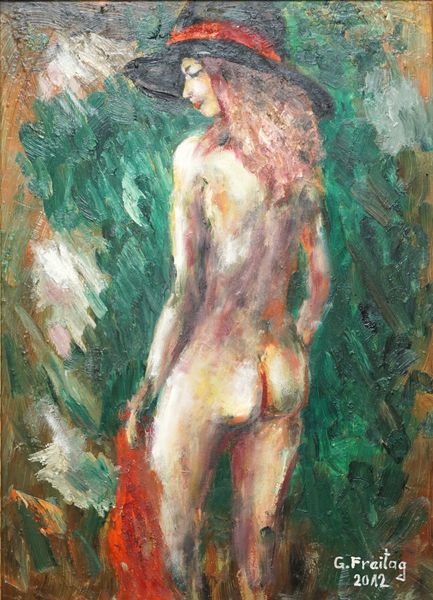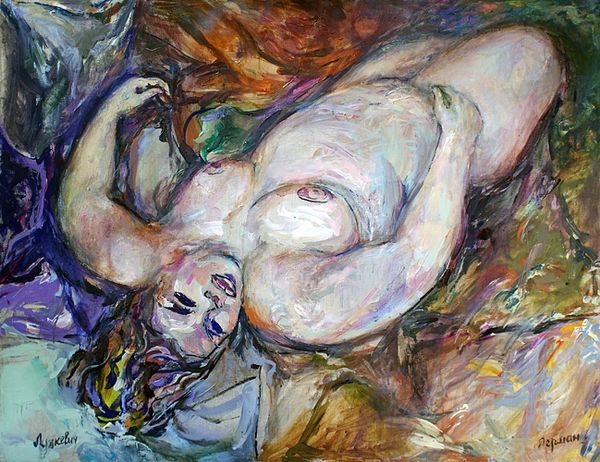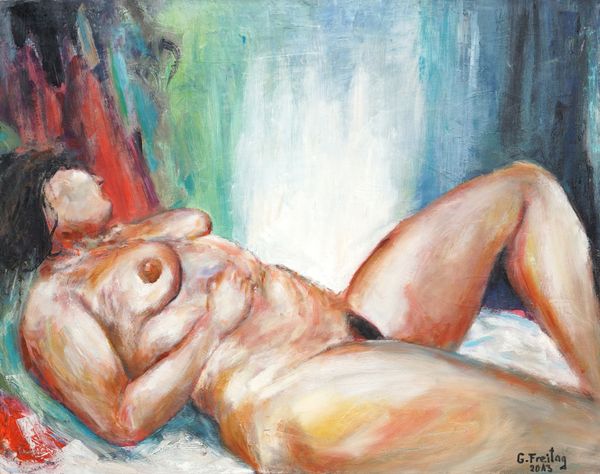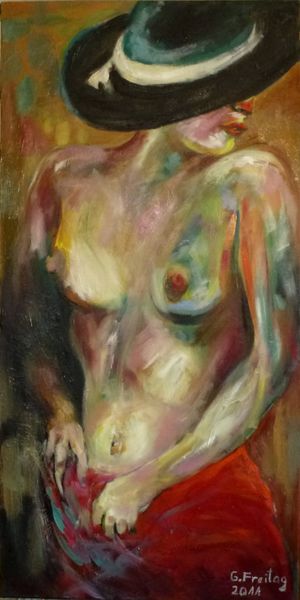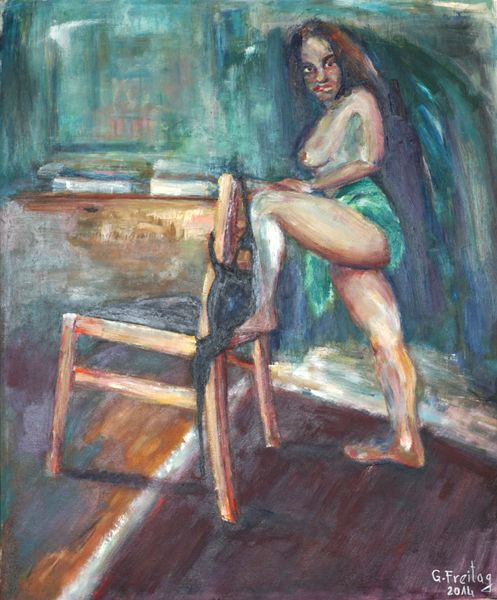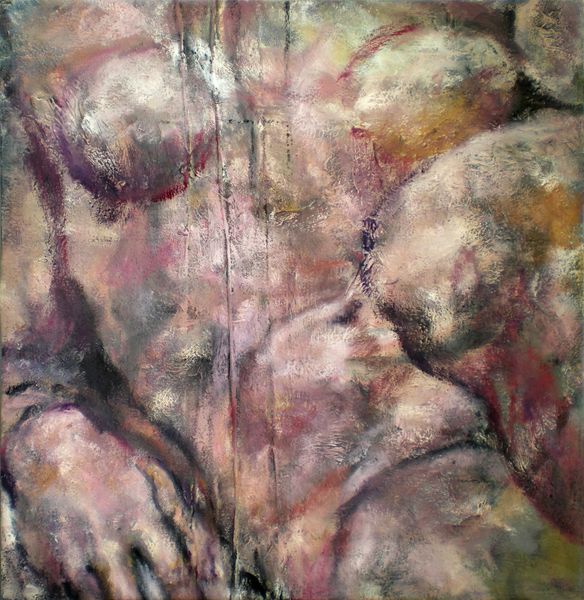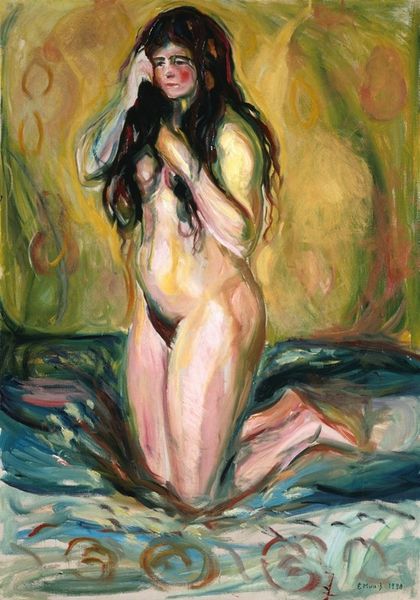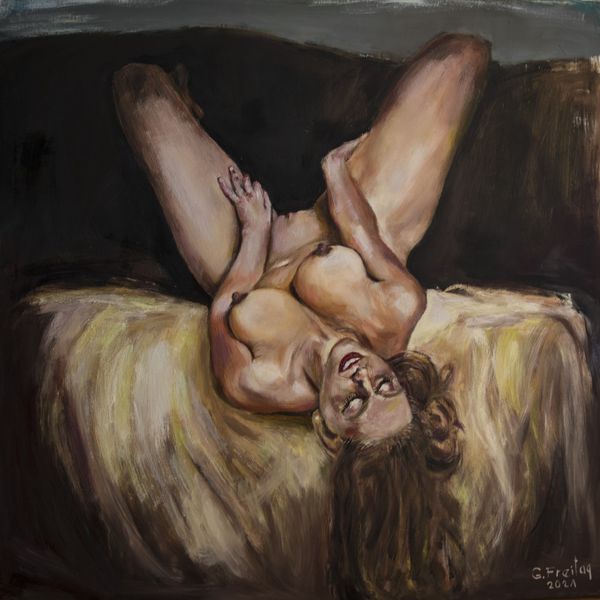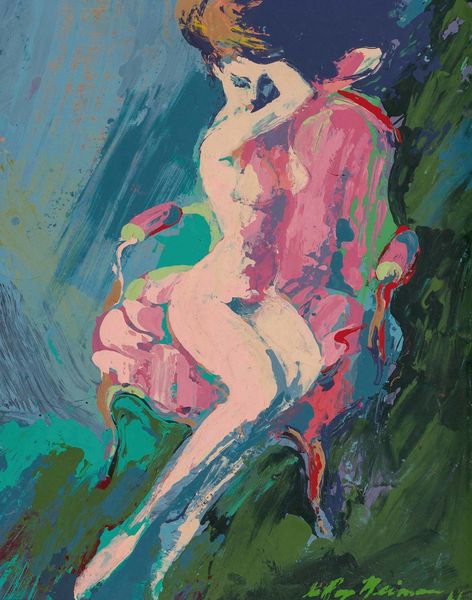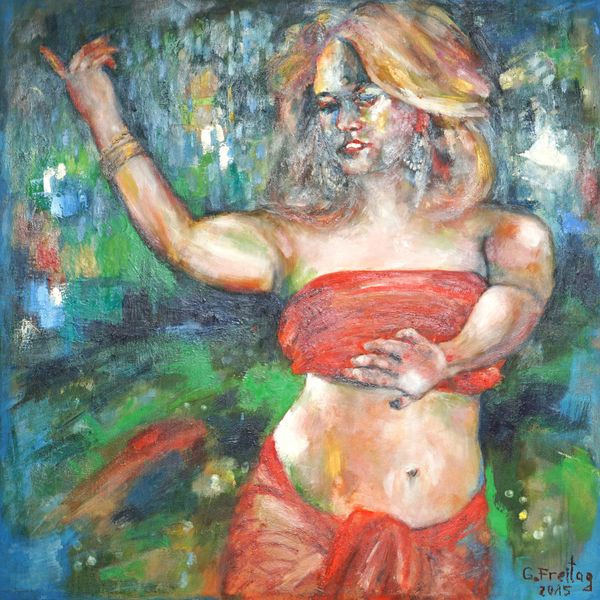
Dimensions: 80 x 80 cm
Copyright: Copyright: Gazmend Freitag
Curator: Gazmend Freitag’s “Nude with Book,” painted in 2012. Immediately, the vibrant, almost fauvist use of color strikes me. There’s a boldness in the application of paint, wouldn't you say? Editor: Yes, definitely. It has this sort of restless, energetic feel about it. The woman seems caught between poses or thoughts. Is she reading, resting, or posing? What is the gaze meant to capture, her desire or that of someone else? Curator: Well, Freitag seems interested in figuration and the nude, re-examining historical painting tropes through a contemporary lens. We have to consider how art history shaped this presentation of a female nude—where it’s positioned and how it makes us reflect on objectification versus self-representation. Editor: Precisely! The gaze becomes critical, particularly considering that the art historical context frames female bodies as passive objects. Here, the direct, albeit slightly ambiguous gaze challenges easy readings. Is the book a tool of empowerment, adding layers to her identity? Or does it merely reinforce some stereotypical "intellectual" aesthetic? Curator: That interplay is what makes this so compelling. I also wonder how Freitag, working in the 21st century, deals with Expressionism’s historical maleness and sometimes troubled representation of women. He avoids heavy themes of angst, perhaps creating a new path? Editor: He certainly seems intent on pushing back against formal constraints and expectations. The expressive color feels tied to Fauvist influence, with its liberated colors and forms. In a world of very visible painting trends, there seems a deliberate choice to evoke early modernist rebellion but also update its visual language to current dialogue around the body and self. Curator: Agreed, and that is so interesting given his position as a painter now. Editor: Indeed, this is less a revolutionary statement perhaps than it is an investigation into expression, visibility, and their changing contexts. A really insightful piece that engages art’s historic conversations in interesting ways.
Comments
No comments
Be the first to comment and join the conversation on the ultimate creative platform.


